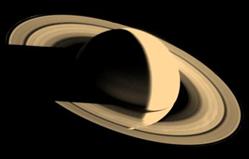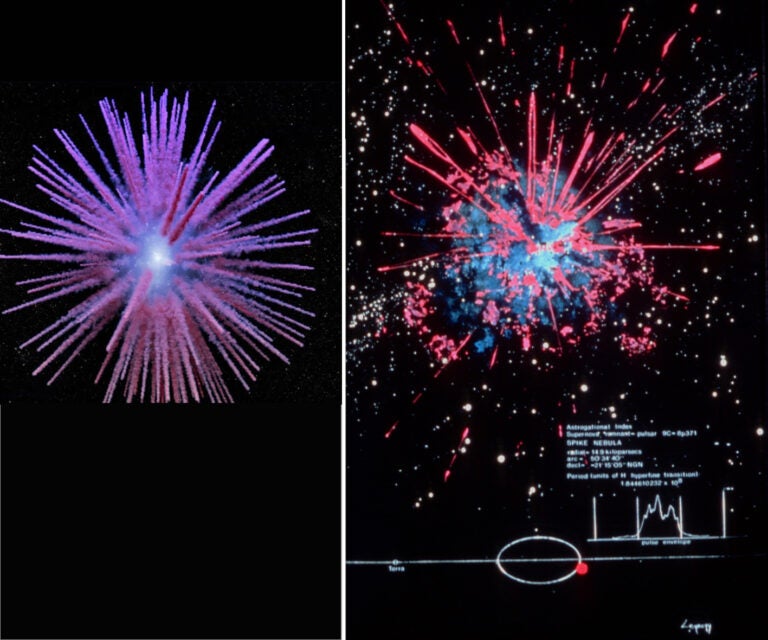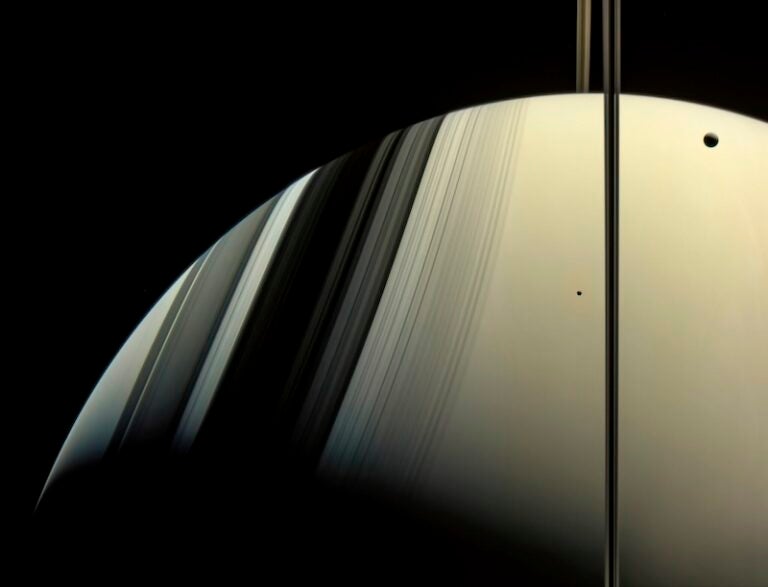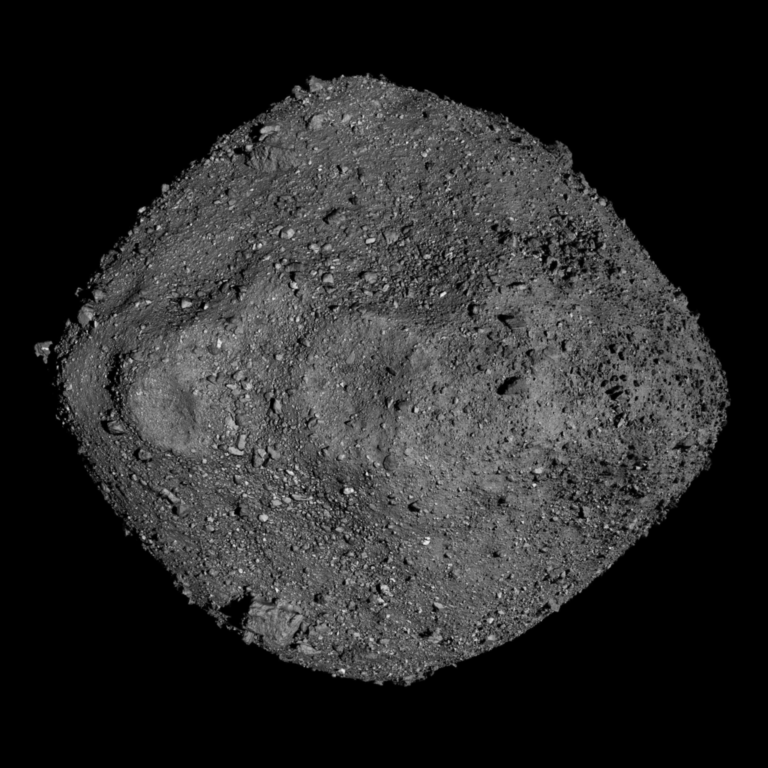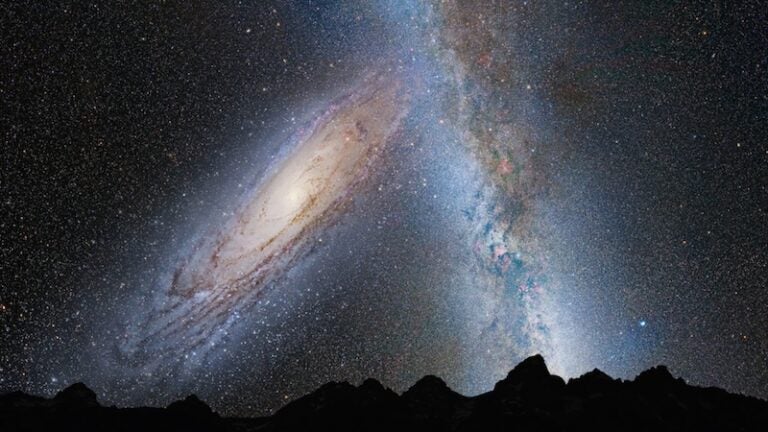Scientists have gotten their best look ever at the invisible ring of energetic ions trapped in Saturn’s giant magnetic field, finding that it is asymmetric and dynamic, unlike similar rings that appear around Earth.
Using the Magnetospheric Imaging Instrument on NASA’s Cassini spacecraft, a team led by Dr. Stamatios Krimigis of the Johns Hopkins University Applied Physics Laboratory (APL), discovered that Saturn’s ring of energetic ions, called a “ring current,” is a warped disc that is deflected by the solar wind out of the equatorial plane on the planet’s night side and thickens dramatically on the day side. The images, obtained by a unique camera that Krimigis says “visualizes the invisible,” show the plasma and radiation belts in Saturn’s environment.
At Earth, ring currents form during large solar wind-driven magnetic storms, although they fade quickly as the driving solar wind disturbance recedes into deep space. At Saturn, the Magnetospheric Imaging Instrument (MIMI) observed that the ring current’s intensity seemed only weakly related to solar activity.
The presence of a ring current around Saturn was first suggested in the early 1980s from magnetic anomalies observed by NASA’s Pioneer 11 and Voyager 1 and 2 spacecraft. But Saturn’s ring current had never been mapped on a global scale; only small areas were mapped previously, and not in this detail. MIMI was designed for just this purpose; developed by an APL-led international team, MIMI has three distinct sensors, one of which contributed the images for this work.
False-color images accompanying the Nature article were taken by MIMI’s ion and neutral camera and show the intensity of the energetic neutral atoms emitted from the ring current through a process called charge exchange. This happens when a trapped energetic ion steals an electron from a cold gas atom, becomes neutral and escapes the magnetic field. Scientists are using these images to create a map of the invisible ring current, which is roughly five times farther from Saturn than its famous icy rings.

